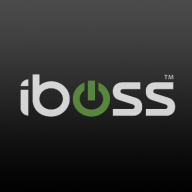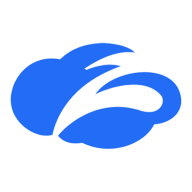


Check Point Harmony SASE and Zscaler Zero Trust Exchange Platform compete in the SASE and Zero Trust Network Access markets. Check Point seems to have the upper hand in providing a unified and user-friendly experience, while Zscaler stands out for its integration capabilities and wider recognition.
Features: Check Point Harmony SASE is notable for its Zero Trust Network Access, centralized management, and the ability to access internal resources without a full VPN. It also offers multi-factor authentication and an easy connection for multiple networks. Zscaler Zero Trust Exchange Platform includes web filtering, API integrations, and robust DLP capabilities. It integrates seamlessly across organizations and is known for its content filtering and secure API interactions.
Room for Improvement: Check Point Harmony SASE can improve its portal performance, support cycle, and UI intuitiveness. Stability during high usage is also suggested for enhancement. Zscaler Zero Trust Exchange Platform can work on its expensive licensing, integration limitations, and better scalability with more pre-defined dictionaries.
Ease of Deployment and Customer Service: Check Point Harmony SASE offers simple setups but has inconsistent support response times. Users appreciate its personalized customer service. Zscaler provides comprehensive support and broad deployment across various cloud infrastructures, though users suggest improving support comprehensiveness and response consistency.
Pricing and ROI: Check Point Harmony SASE is positioned as a mid-range to premium solution offering significant ROI through security and productivity gains with competitive pricing for small to medium businesses. Zscaler is perceived as costlier, appealing to large enterprises with high user volumes. Its ROI benefits larger companies through competitive pricing per user. Check Point's pricing structure is seen as potentially more cost-effective for smaller businesses.
| Product | Market Share (%) |
|---|---|
| Zscaler Zero Trust Exchange Platform | 17.4% |
| Check Point Harmony SASE (formerly Perimeter 81) | 5.4% |
| iboss | 2.4% |
| Other | 74.80000000000001% |



| Company Size | Count |
|---|---|
| Small Business | 6 |
| Midsize Enterprise | 6 |
| Large Enterprise | 5 |
| Company Size | Count |
|---|---|
| Small Business | 52 |
| Midsize Enterprise | 18 |
| Large Enterprise | 15 |
| Company Size | Count |
|---|---|
| Small Business | 16 |
| Midsize Enterprise | 11 |
| Large Enterprise | 41 |
Iboss offers a comprehensive cloud-based security platform valued for its scalability and autonomous features, ensuring robust security with easy deployment and management capabilities.
Renowned for its robust security architecture, Iboss integrates seamlessly within diverse networks, delivering efficient granular filtering and advanced content categorization. Its single pane of glass console provides ease of management, allowing rapid scalability suitable for rapidly deploying environments. Operates in BYOD setups due to inline filtering without device installation. Integration with cloud-based applications enhances user control, and features like SASE, SSL inspection, and ChatGPT risk protection stand as highlights. Despite its strengths, users have pointed out areas for enhancement like direct navigation in reports, SSL decryption, and better cloud integration while having room to improve data loss prevention.
What are the most important features of Iboss?The usage of Iboss spans educational institutions, specifically K-12, to enforce internet policies, protect data, and support remote work environments. It provides web filtering and security frameworks to ensure safe browsing. Its platform-as-a-service model offers flexibility for both cloud-based and on-premises requirements, integrating seamlessly to deliver enhanced security features suitable for various deployment needs including zero trust, CASB, and network security for work-from-home setups.
Check Point Harmony SASE, formerly Perimeter 81, offers robust security features like split tunneling, MFA, and Zero Trust Network Access focused on secure remote access and optimized connectivity for remote teams.
Check Point Harmony SASE delivers advanced security through a user-friendly interface, efficient VPN connections, and a centralized management console. It enhances security with real-time threat intelligence from ThreatCloud and traffic management via built-in optimization. Firewall as a Service and Secure Web Gateway safeguard against unauthorized access and phishing. While users seek enhanced networking customizations and better integration with identity providers, there's an emphasis on improving reporting, real-time analytics, and policy management. Requests also include a Chrome extension, traffic balancing, and simplified configuration to address some resource-intensive aspects.
What are the key features of Check Point Harmony SASE?
How can organizations benefit from using Check Point Harmony SASE?
Check Point Harmony SASE is used across industries for secure remote access and connectivity, protecting sensitive data, and managing access to corporate resources. It is ideal for those with hybrid cloud models and requires comprehensive security measures combined with existing IT infrastructures to meet specific industry demands.
Zscaler Zero Trust Exchange enhances security with seamless cloud-based connectivity and VPN-less operation, offering integration with multiple identity providers and advanced security features, suitable for remote work environments.
Zscaler Zero Trust Exchange provides secure, adaptive connectivity without traditional VPNs, allowing organizations to replace legacy systems and bolster remote work security. The platform offers cloud-based protection, single sign-on, dynamic URL categorization, and scalable solutions. While advanced security features like DLP and threat protection enhance data protection, users may face issues with speed, connectivity, and some customization options. Integration challenges, latency due to multi-tenant hosting, reporting delays, and licensing costs require consideration. It supports secure internet access and private application security, ensuring traffic control and data compliance.
What are the key features of Zscaler Zero Trust Exchange?Zscaler Zero Trust Exchange is deployed across industries to secure remote access and enforce zero trust principles. Organizations in finance, healthcare, and technology sectors utilize it for secure internet access and visibility into cloud applications, enhancing performance and compliance in dynamic environments.
We monitor all ZTNA as a Service reviews to prevent fraudulent reviews and keep review quality high. We do not post reviews by company employees or direct competitors. We validate each review for authenticity via cross-reference with LinkedIn, and personal follow-up with the reviewer when necessary.